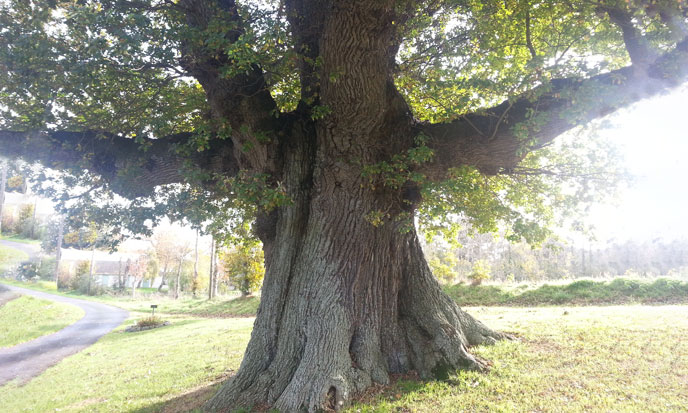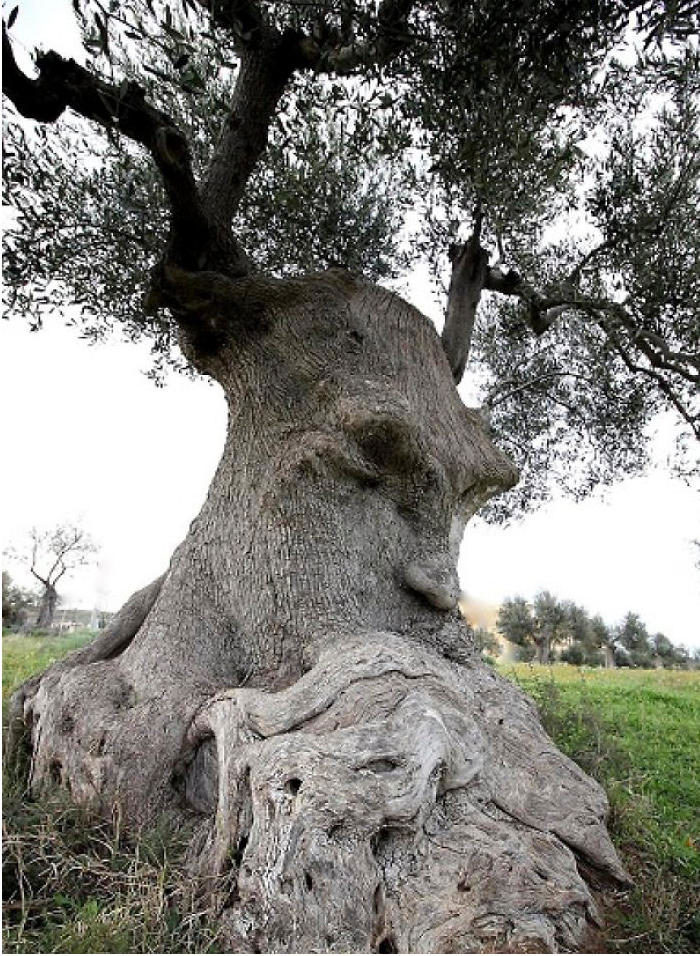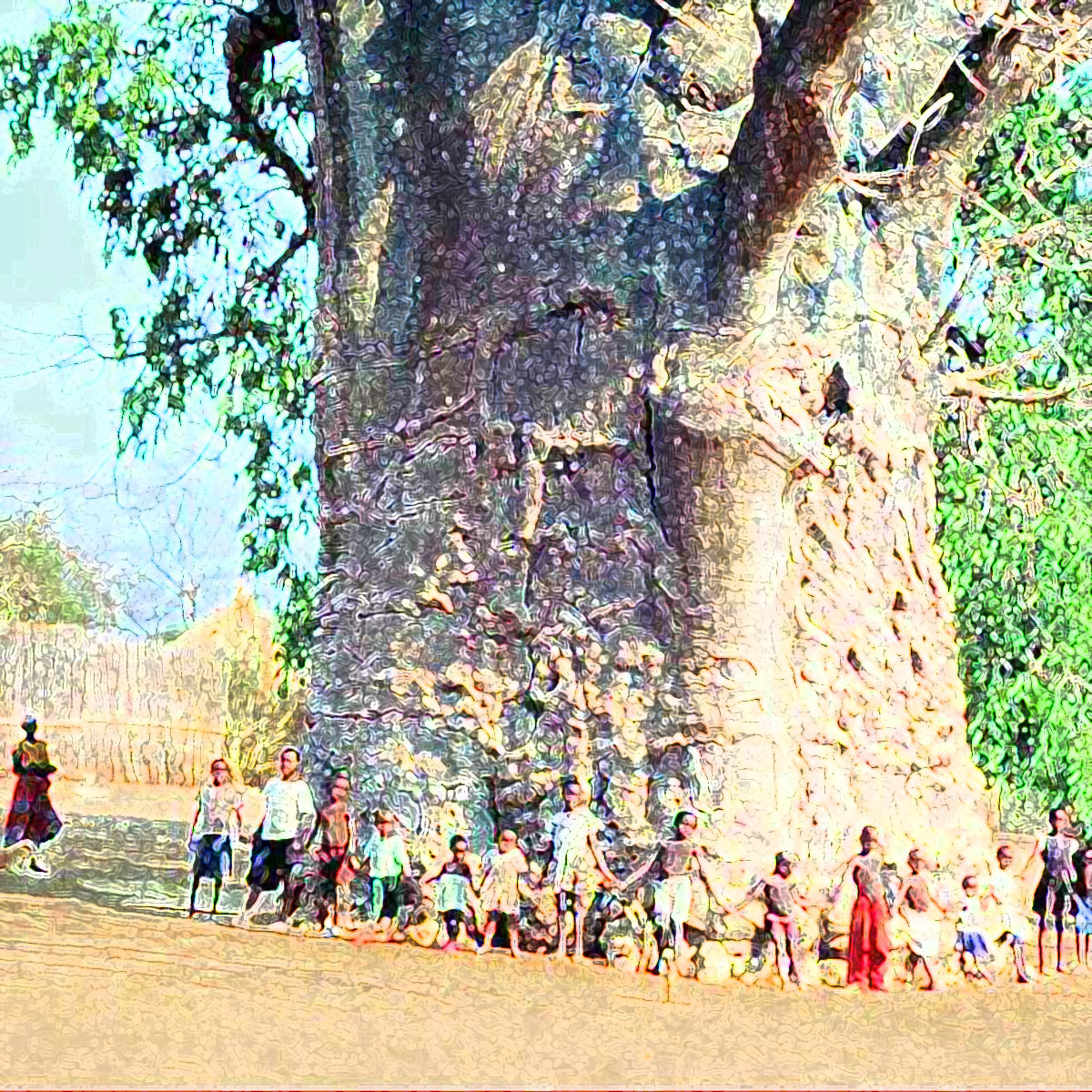During my initiation, I was led to speak to trees. After a fool reluctance, I discovered that this exercise is more refreshing than solitary meditation. And even much more: a few people know how to meditate, but everyone can talk to trees.
Plants hear you if you take time for a real encounter. Make place, open yourself. They’ll teach you how to get in touch with them, considering their age, their essence and their social role. In the arboreal society, each subject has its own function, like bees in the hive. There are warrior trees, healer trees and guard trees. There are knowledgeable trees, clairvoyant trees and seer trees. Each plays its part in the concert of the forest. The first time it took me to overcome a strong sense of ridicule – this story took place 25 years ago. As a teenager who calls his first rider to dance, I hesitated to hug the tree. True to his pedagogical principles, my benefactor laughed uproariously.
“Go ahead, give it a frenchkiss, it is waiting for it desperately!” His antics did not help me in.

Now this is where you should be to establish the dialogue with anyone, god, human, animal, or tree. In the core of yourself, then open your heart. The words that come from the heart do not need translation, every being understand right away. If you want to talk with trees you must first become their friend. You have to learn to recognize the species. Prefer oak, beech and chestnut trees: they are the most talkative from my point of view. Older fruit trees are sweet and pleasant, while conifers have proved less talkative with me. Avoid saplings, they lack practice.
Older is the tree, more friendly and talkative it happened to be. Locate the tree through its presence: the guardians and warriors are the most interesting ones. Encircle the trunk in your arms. Formulate softly the question in your head “How many winters have you spent?” A tree grows during wintertime, it grows from the heart, one more stria inside the trunk.
 “What is your role? Where are your allies, your family? Do you have any offspring in the neighborhood?” Through its talking, the tree will teach a lot about you. The best subject is a neighbourhood tree that already knows you. The one which grows in front of your nose, against which you pee, or your dog or your horse. The one which everyday watches you go, in a hurry, broken. Learn to stop. To breathe, to dance, to linger: the tree has plenty of time. Make a few steps under its shade, turn around the bush, smell the branches, listen to the birds it shelters, scan the wounds of its bark. When the tree is your friend, willow, yew or beech, the essence does not matter anymore, nor whether it is a guardian or a poet, nor the winter when it was born.
“What is your role? Where are your allies, your family? Do you have any offspring in the neighborhood?” Through its talking, the tree will teach a lot about you. The best subject is a neighbourhood tree that already knows you. The one which grows in front of your nose, against which you pee, or your dog or your horse. The one which everyday watches you go, in a hurry, broken. Learn to stop. To breathe, to dance, to linger: the tree has plenty of time. Make a few steps under its shade, turn around the bush, smell the branches, listen to the birds it shelters, scan the wounds of its bark. When the tree is your friend, willow, yew or beech, the essence does not matter anymore, nor whether it is a guardian or a poet, nor the winter when it was born.
Like all living beings, the tree is a being who feels, who follows, who knows. The tree become tamed with patience and permeability. It learns to recognize you if you recognize its soul. If you open your heart to it, it will open its to you. While its teachings will open wonderful tracks for you to explore. Meditate at its foot, honor your tree by adopting its inner attitude, all of patience and stillness. Do not expect from it the story of heroic deeds of the past, as the stones can show.
Trees never show any violence. They have no aggressiveness. They are peaceful but not passive. Stationary, but active, they circulate energies that, without them, would seriously lack. But do not abuse of the transmission from consciousness to consciousness with the plant pachyderms: some shaman-trees, multi-centennial oaks or beeches, may exhaust the unwise person who stays too long at the foot of one of them.
Stones, too, can get in touch with us. If the trees speak, stones send pictures. They are memories of this world.




